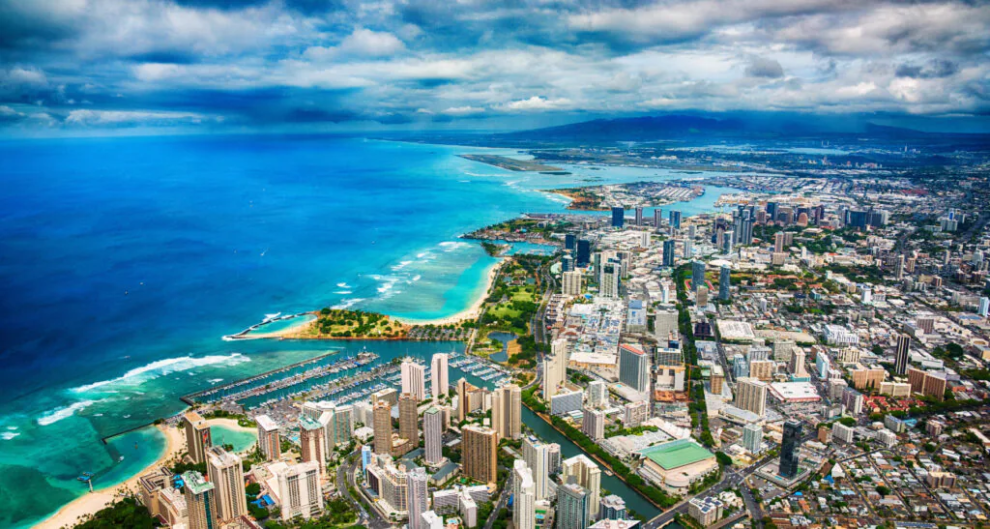Breathtaking scenery and vibrant culture are two things that come to mind when you think about Hawaii–along with sandy beaches and mai tais, of course. Hawaii is not only a traveler’s dream but also a bustling hub of aviation activity. Dive into the heart of the Pacific to unveil the busiest airports in Hawaii. From the lush landscapes of Maui to the bustling capital of Honolulu, we will rank and explore these paradise gateways and shed light on their significance and impact on the Aloha State’s transportation landscape.
1. Daniel K Inouye International (HNL)
Daniel K Inouye International stands as the primary gateway to the Hawaiian Islands. Nestled on the southern coast of Oahu in the capital city of Honolulu, this airport is not only one of the busiest in Hawaii but also one of the most significant in the Pacific region. It is a bustling hub and a pivotal entry point for travelers from around the world.
HNL consistently ranks high in terms of passenger traffic. Annually, it serves millions of travelers who arrive and depart from its terminals. In 2022 alone, the international airport carried over 5.8 million passengers. Additionally, its strategic location as a trans-Pacific hub connects North America, Asia, and the South Pacific, making it a crucial crossroads for both domestic and international flights. The airport’s terminals can handle this massive influx of passengers while offering a range of amenities, from shopping and dining options to cultural displays and local art.
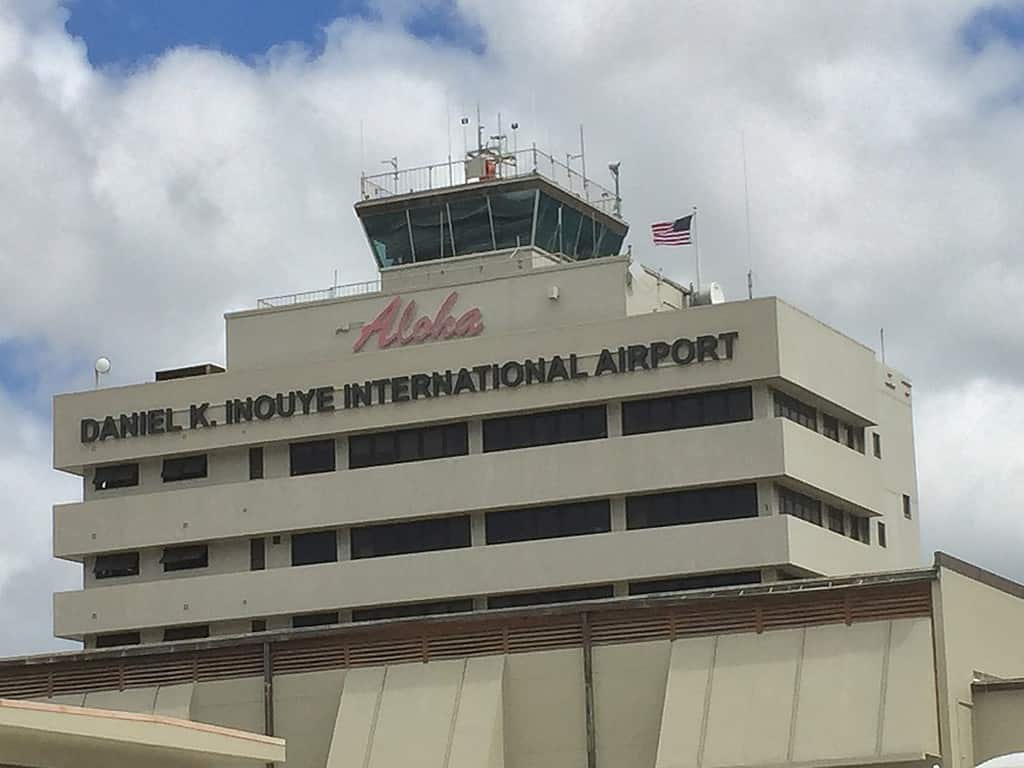
Economic Impact
Beyond its passenger services, HNL is also a vital center for cargo operations. Its airfreight facilities handle a substantial volume of goods and cargo, emphasizing its role in the state’s economy. Hawaii’s geographical isolation makes air cargo services an essential lifeline, ensuring that goods are transported efficiently to and from the islands.
Daniel K Inouye International impacts the economy far beyond its runways. It serves as an employment hub, supporting countless jobs both directly and indirectly through tourism and various businesses related to air travel. As the busiest airport in Hawaii, HNL contributes significantly to the state’s economy, playing a pivotal role in the tourism industry.
2. Kahului Airport (OGG)
Kahului Airport is another vital transportation hub located in the heart of tourism on the stunning island of Maui. As the island’s primary airport, OGG serves as a gateway for over 2.9 million visitors annually, exploring Maui’s breathtaking landscapes, from lush rainforests to pristine beaches.
Kahului Airport consistently sees a substantial influx of passengers. Travelers from all corners of the world pass through its terminals, eager to experience the enchanting beauty of Maui. Additionally, the airport’s modern facilities cater to the needs of visitors and residents alike, offering a welcoming start or end to their island adventures.
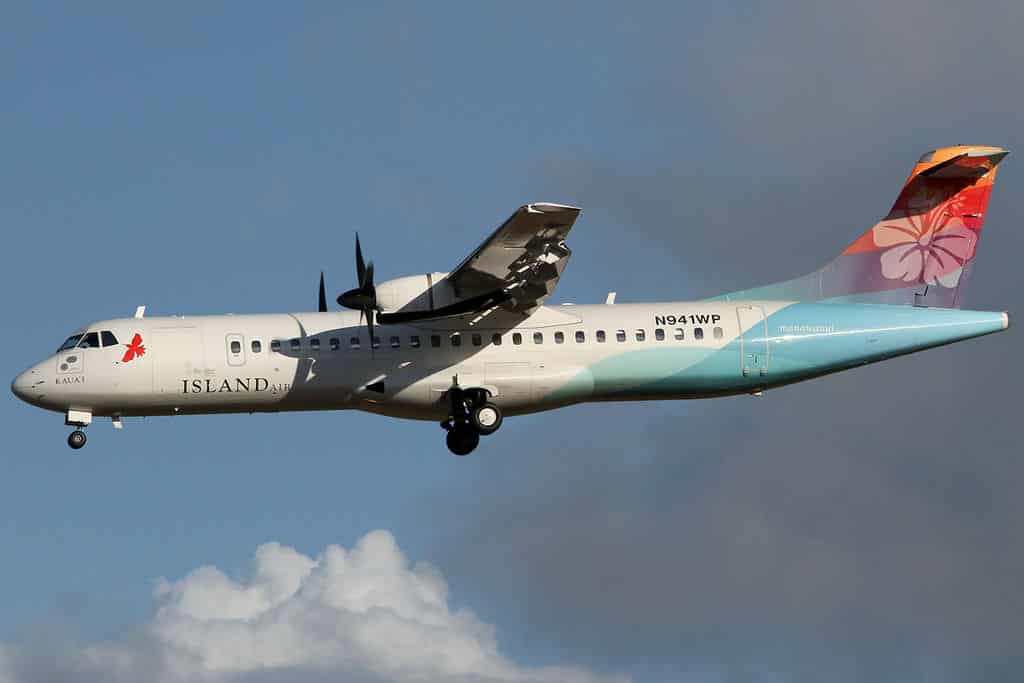
Economic Impact
While not as extensive as Daniel K Inouye International, OGG also plays a crucial role in handling cargo operations for the island. It ensures that goods and products flow efficiently to Maui’s residents and visitors, supporting the island’s economy and tourism industry.
Furthermore, Kahului Airport is a significant contributor to Maui’s thriving tourism industry, a vital sector for the island’s economy. The airport’s proximity to some of Maui’s most iconic attractions, including Haleakalā National Park, the scenic Hana Highway, and the charming town of Lahaina (which is currently being rebuilt after devastating wildfires). Travelers arriving at OGG are just a short drive away from these treasures, making it an ideal entry point for those eager to explore the island’s unique charms.
3. Ellison Onizuka Kona International at Keahole (KOA)
Another pivotal Hawaiian aviation hub located on the picturesque Big Island of Hawaii, Ellison Onizuka Kona International at Keahole, is nestled on the island’s western coast. This airport is a gateway to a unique blend of natural beauty, cultural richness, and adventure. Like most airports in the Aloha State, KOA sees a steady stream of travelers, over 1.4 million each year.
Furthermore, Ellison Onizuka Kona International at Keahole’s unique outdoor location provides visitors with a warm introduction to the island’s charms and slow way of life in touch with nature–on clear days, you can even see Mauna Kea in the distance. As one of the key airports in Hawaii, it accommodates a mix of domestic and international flights, making it an important node in the Pacific air travel network.
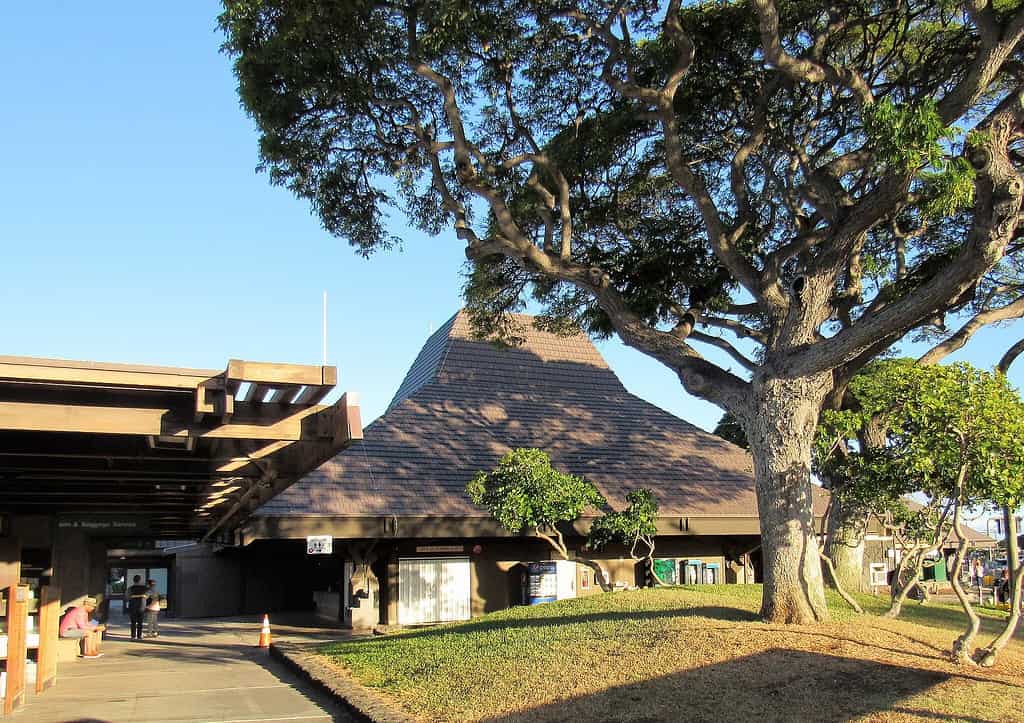
Economic Impact
While not as prominent in cargo operations as some other Hawaiian airports, KOA still plays a crucial role in facilitating goods and materials’ transportation, supporting the Big Island’s local economy.
Additionally, Ellison Onizuka Kona International is deeply intertwined with the Big Island’s diverse attractions. From Hawaii Volcanoes National Park to the beaches of the Kona and Kohala coasts, travelers arriving at KOA anticipate a grand adventure. These regions, celebrated for their geological wonders and cultural richness, include unique green and black sand beaches.
4. Lihue Airport (LIH)
Kauai is the oldest and smallest of the Hawaiian islands, sporting a rich history, lush rainforests, and a quieter way of life. Its airport, Lihue Airport, is an important transportation hub perched on the island’s eastern coast. The airport welcomes over 1 million annual travelers to the Garden Isle, where lush green landscapes and natural beauty are all around.
Lihue Airport serves as the primary gateway for travelers arriving on Kauai. Year after year, it introduces passengers to the island’s breathtaking scenery and vibrant culture. Furthermore, the airport provides a warm welcome and a smooth transition into Kauai’s relaxed atmosphere.
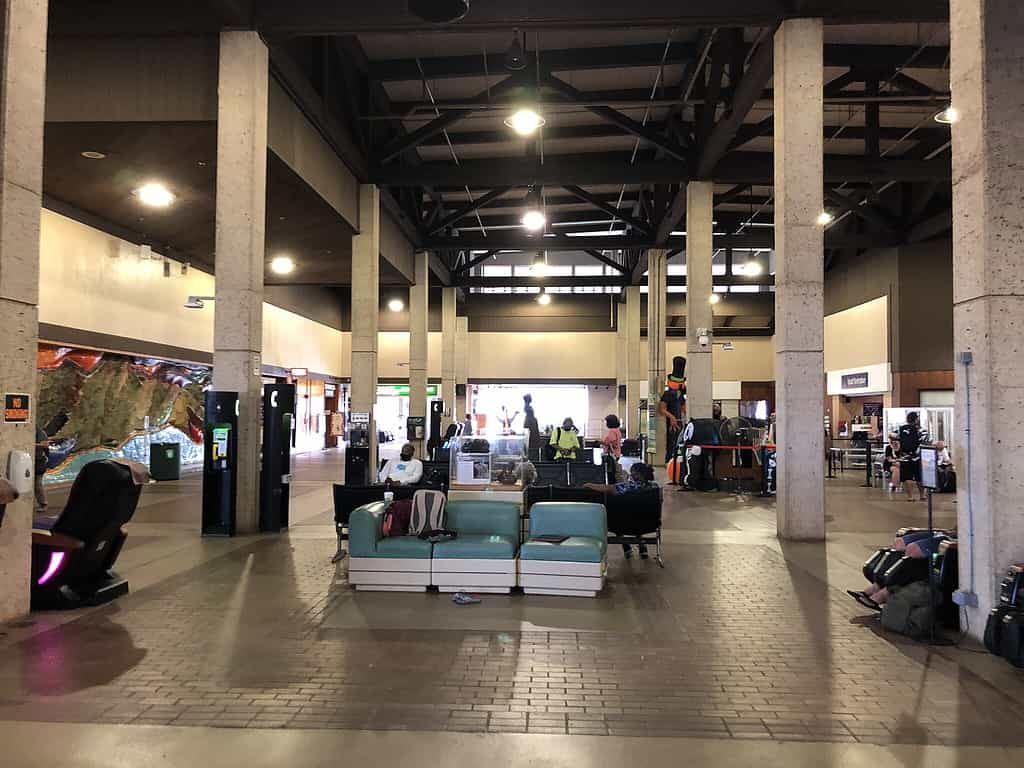
Economic Impact
LIH handles freight operations that are essential for supporting the island’s economy. It ensures the efficient transport of goods to meet the needs of both residents and tourists. Additionally, Lihue Airport’s significance is closely tied to the remarkable beauty of Kauai. As visitors disembark at LIH, they are just moments away from experiencing the island’s unique wonders, from the dramatic landscapes of Waimea Canyon to the lush tranquility of the Na Pali Coast.
Like all Hawaiian airports, Kauai’s airport plays a pivotal role in the state’s tourism industry. It serves as the initial point of contact for travelers eager to explore the island’s pristine beaches, hiking trails, and cultural attractions.
5. Hilo International Airport (ITO)
Spanning 93 miles across, the Big Island of Hawaii is the largest of the Hawaiian islands. So, it is no surprise that the island has two international airports. Hilo International Airport is located on the opposite side of the island from Daniel K Inouye International in Kona. ITO is nestled on the eastern coast of the Big Island in the island capital of Hilo.
This airport serves as a vital entry point for visitors eager to explore the natural wonders, volcanic landscapes, and cultural richness that define the Big Island. ITO welcomes a steady flow of passengers, 350,000 annually, who are drawn to the Big Island’s unique allure. Although not as busy as Honolulu, Hilo International Airport provides travelers with a genuine Hawaiian welcome and an authentic sense of place. The airport is a testament to the island’s serene charm and mountainous backdrops.
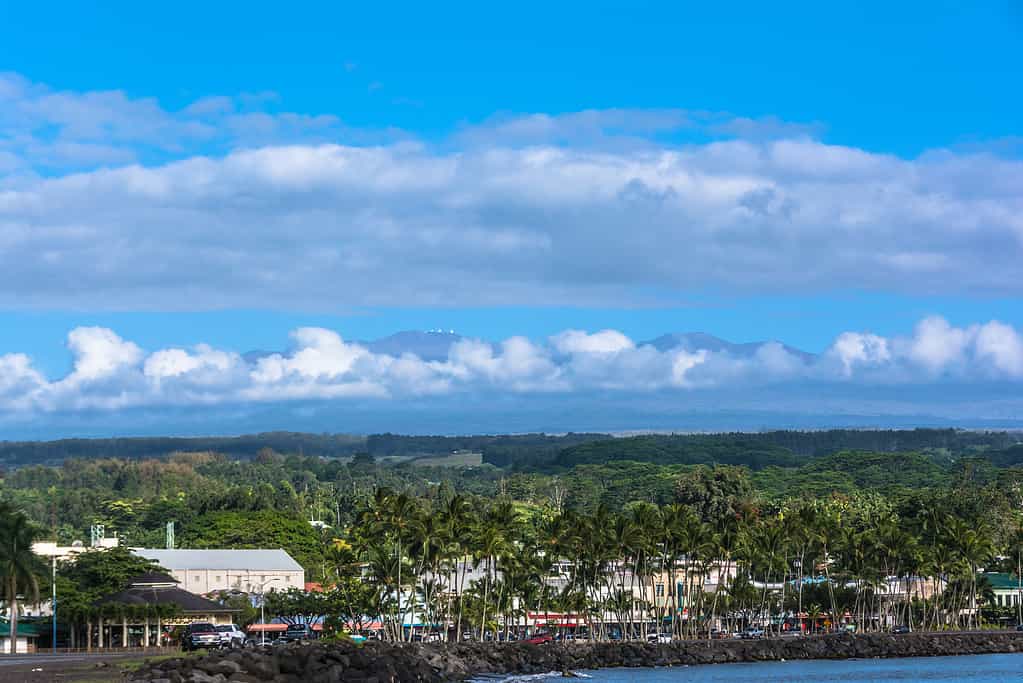
Economic Impact
While Hilo International Airport isn’t a major cargo hub, it plays a crucial role in the transportation of goods to support the local economy, ensuring the availability of supplies and resources. Furthermore, the airport’s location offers easy access to Hawaii Volcanoes National Park, Rainbow Falls, and the vibrant town of Hilo. These attractions provide a deep dive into Hawaiian culture and the island’s geological history. Visitors may even witness the spectacle of lava in the caldera and recognize iconic spots from “Jurassic Park.”
Challenges For Hawaii’s Airports
Hawaii’s airports are vital for tourism and trade. However, they often face capacity constraints during peak seasons, and the limited infrastructure leads to congestion. Furthermore, the geographical isolation of the islands in the central Pacific makes it more expensive and challenging to maintain and upgrade airport facilities, affecting the availability of resource supplies like aviation fuel and construction materials.
The pristine environment of the Hawaiian Islands is a key attraction for visitors. However, balancing infrastructure expansion with the need to protect the unique ecosystems of the islands is a critical challenge. High operating costs, influenced by the state’s high cost of living, impact both airport budgets and ticket prices. Furthermore, Hawaii’s susceptibility to weather-related disruptions, including tropical storms, hurricanes, and volcanic activity, creates challenges such as temporary airport closures and flight cancellations.
Opportunities For Hawaii’s Airports
Hawaii will continue to be a place of vacation daydreams. This continued allure allows the Aloha State’s airports to expand and enhance services to accommodate increasing passenger numbers. Investments in airport infrastructure, such as modernizing terminals and expanding runways, can stimulate economic growth and improve the passenger experience. For instance, Daniel K Inouye International completed a $340-million-dollar, 270,000-square-foot expansion in 2021.
Additionally, Hawaii’s commitment to sustainability offers opportunities for airports to embrace eco-friendly practices. They can adopt the use of alternative fuels, energy-efficient terminals, and initiatives to reduce carbon emissions. Furthermore, Hawaii’s airports can promote the state’s rich cultural heritage. Lastly, efforts to improve inter-island connectivity can make travel between the islands more efficient and cost-effective. Enhanced air transportation options can also stimulate economic growth and provide opportunities for island residents to explore their own state.
Navigating Hawaii’s Airports
Hawaii’s airports are not just transportation hubs. They are gateways to a world of wonder, adventure, and cultural richness. Each airport, from Honolulu’s bustling hub to the more tranquil Kona and Hilo airports, has a unique role to play in welcoming travelers to this island paradise.
Despite facing challenges such as capacity constraints, geographical isolation, and high operating costs, Hawaii’s airports have numerous growth opportunities. As the state’s tourism industry continues to thrive, investments in infrastructure, sustainability, and cultural integration can enhance the passenger experience and contribute to the state’s economy. Hawaii’s airports are more than just points of arrival and departure. They are the first and last impressions of the islands, where the Spirit of Aloha is palpable.
Source : AZAnimals







